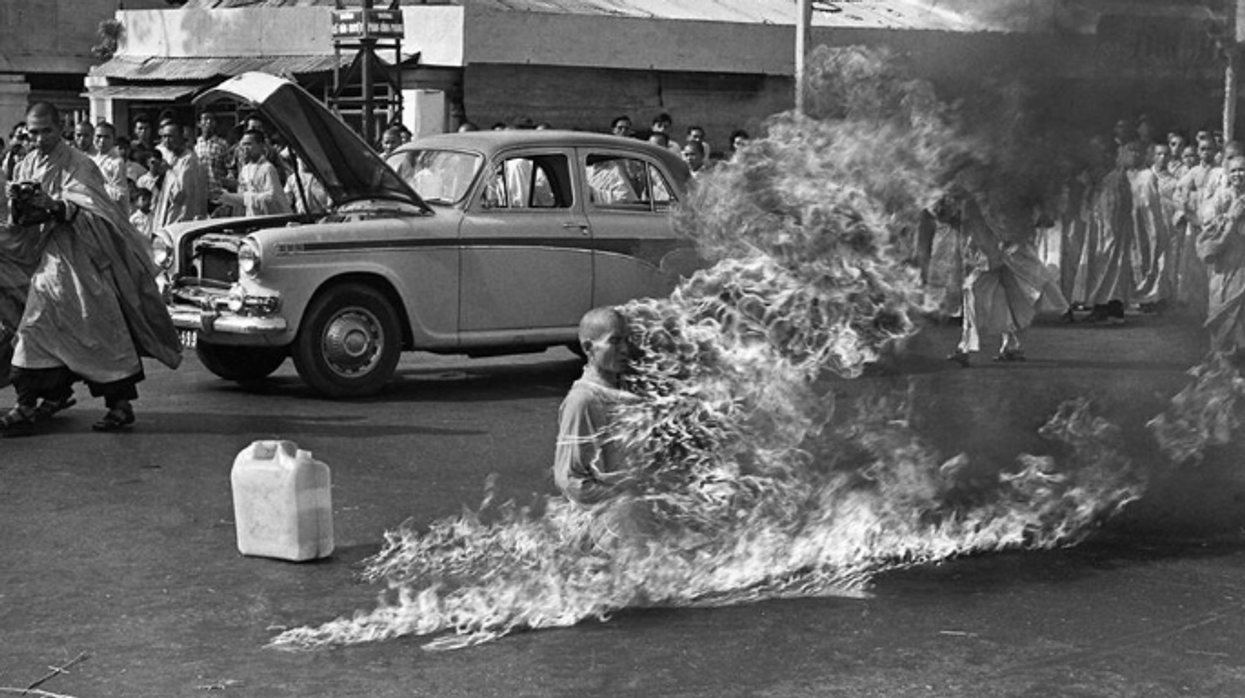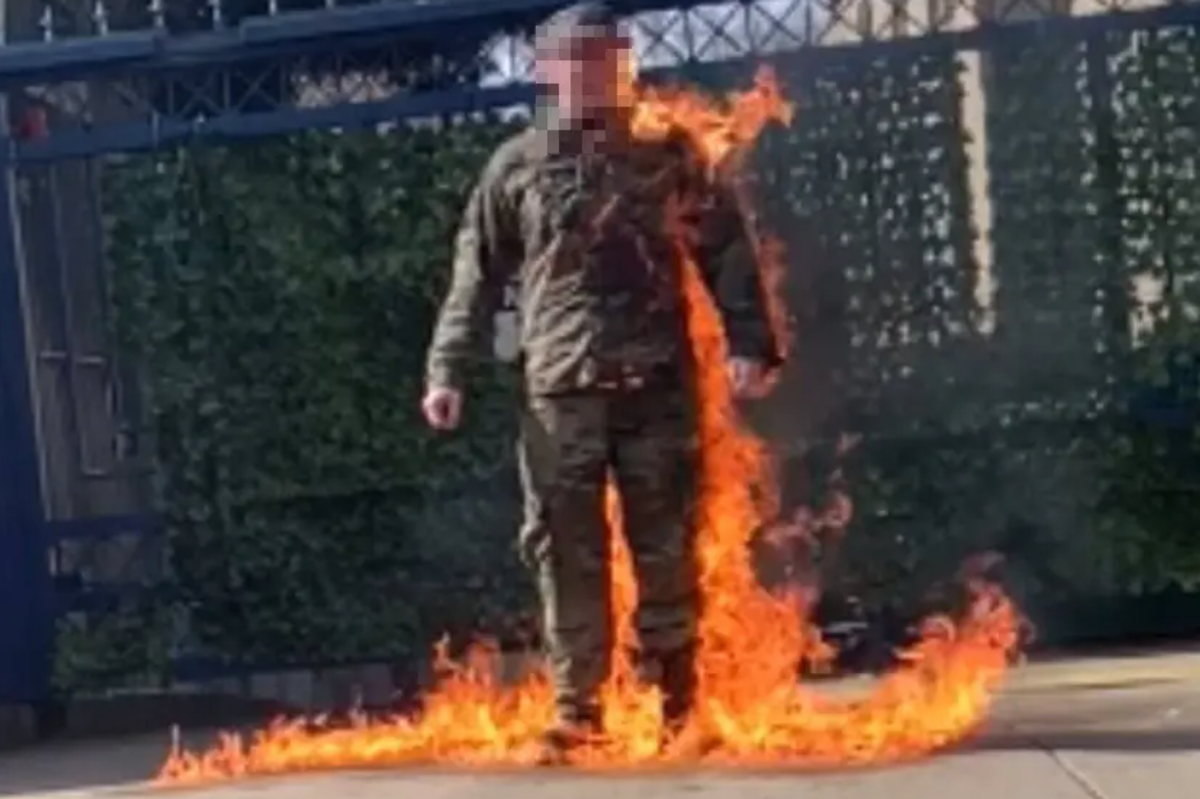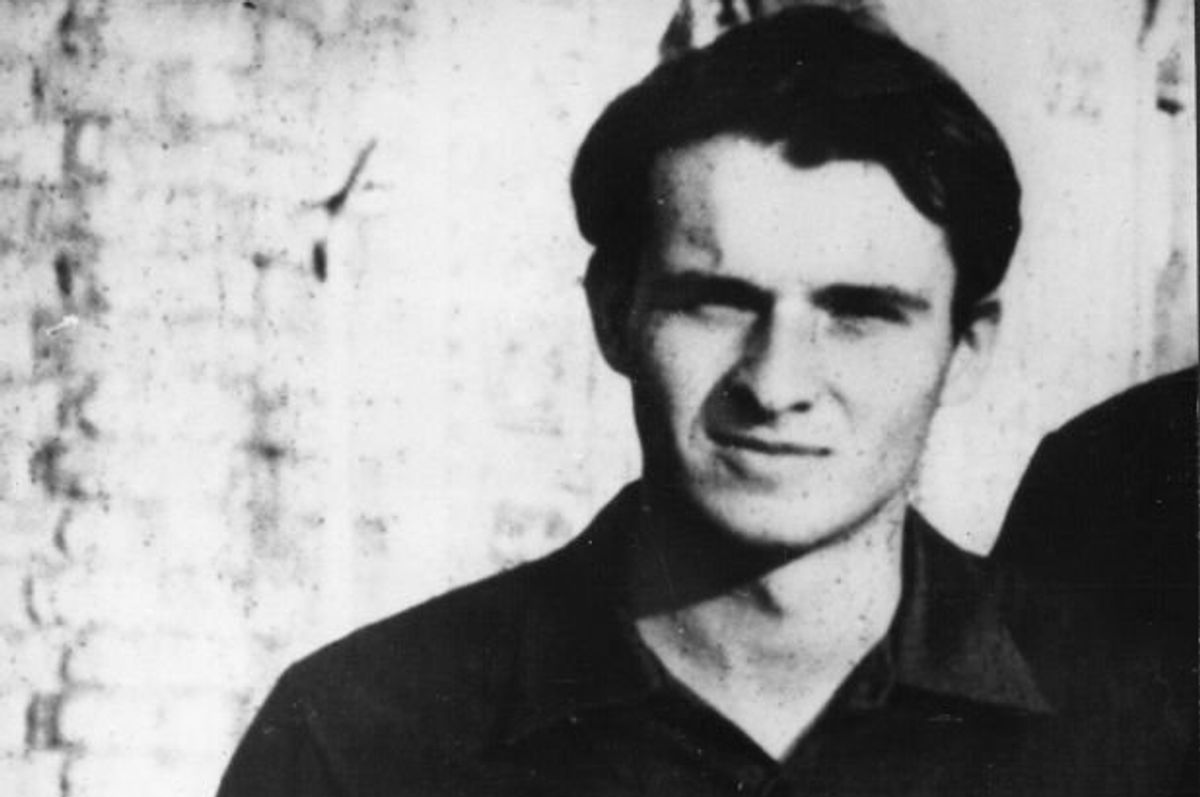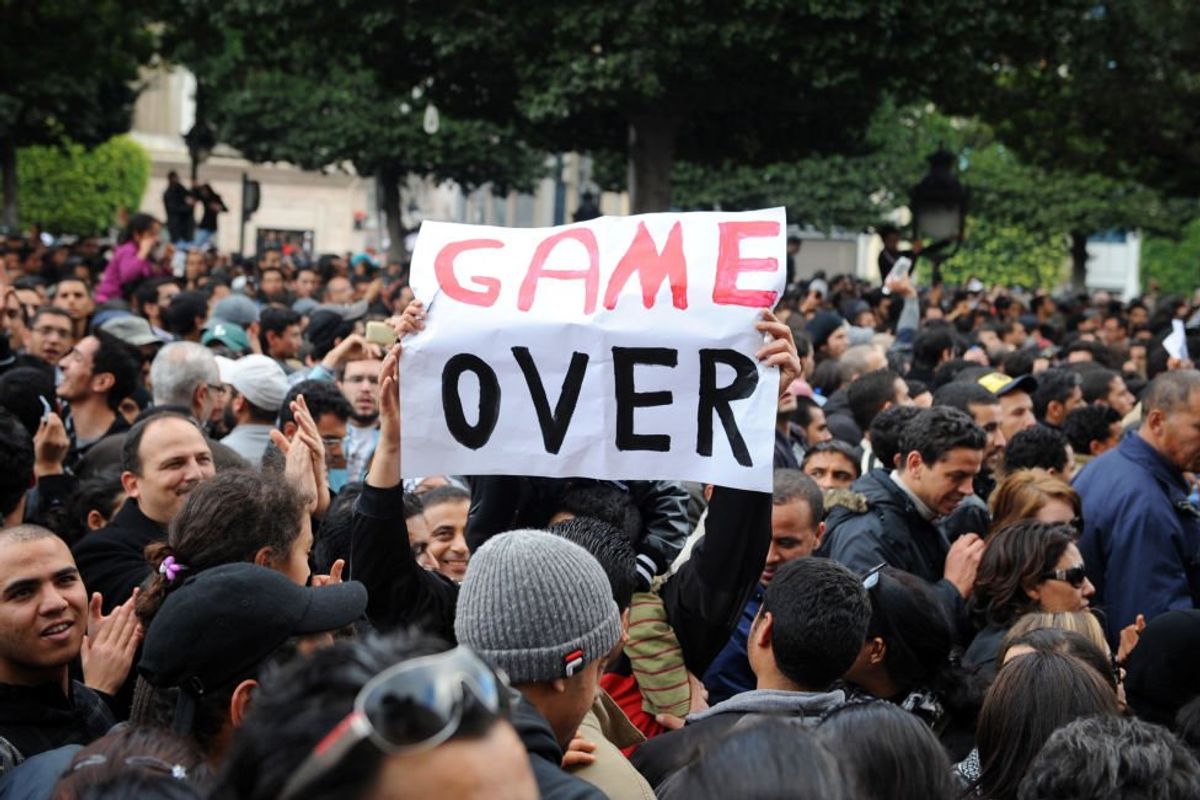Harriet Brewis
Feb 26, 2024

WARNING: Police dash cam captures attempted self-immolation
AP
The US is reeling after one of its servicemen reportedly set himself on fire in protest at the war in Gaza.
A video live-streamed via Twitch on Sunday appeared to show the man, in uniform, standing in front of the Israeli Embassy in Washington DC and identifying himself as a member of the Air Force.
“I will no longer be complicit in genocide,” the man allegedly said, before dousing himself in a clear liquid.
“I am about to engage in an extreme act of protest,” he then added before setting himself alight and repeatedly shouting: “Free Palestine!”
Shocked onlookers instantly intervened, with one person spraying the man with a fire extinguisher.
First responders rushed to the scene at around 1pm local time, and the man was taken to a nearby hospital in a critical condition.
On Monday, authorities confirmed that he had died of his injuries.

Yet, shocking though this incident undoubtedly was, it is by no means the first of its kind.
Indeed, in December, a protester set herself on fire outside the Israeli Consulate in Atlanta, again, in an extreme bid to draw attention to the desperate situation on the Gaza Strip.
So why do people turn to such devastating acts of self-harm in order to make a point? And how long has self-immolation been used as a tactic of defiance?
Self-immolation in history
Records and legends of people setting themselves on fire date back more than 1,000 years, with the first instance largely attributed to the legend of Sati, TIMEmagazine notes.
Sati, one of the wives of the Hindu god Shiva, married against her father’s wishes, according to mythology. And when her father insulted her husband, she burned herself to death.
This allegedly gave rise to a long-outlawed custom in parts of India, which saw widows submit themselves to the flames on the funeral pyres of their dead husbands.
There also exists a Buddist text, called the Lotus Sutra, which refers to a magic king who douses himself with fragrant oil and allows his body to be burned as a sacrifice.
However, one expert explained that whilst an ascetic strain among Chinese and Korean Buddhists includes gestures of painful self-sacrifice – including self-immolation – “Full-body immolation is rarely done solely as a religious practice.”
Dr Robert Sharf, of the University of Berkeley, California, told the New York Times back in 2011: “[Full-body immolition] is more typically a form of political protest [...]. For instance, it has been used repeatedly in Chinese history to protest anti-Buddhist state policies, such as the mass defrocking of priests.”
And yet, arguably the most famous public case of self-immolation as a political demonstration, occurred in South Vietnam back in 1963.
At the time, Buddhists were being persecuted by the government of the staunch Roman Catholic leader Ngô Đình Diệm, and one monk decided to take a dramatic stand.
Thích Quảng Đức, a Vietnamese Mahayana Buddist monk, sacrificed himself for the cause by burning himself alive on a busy Saigon road.
It was to become a catalytic moment, prompting four more monks and a nun to perform the same act of martyrdom and eventually culminating in the toppling of Diệm’s regime at the time.
Speaking of the now iconic image of Đức, sitting calmly amid the flames, John F. Kennedy once said: “No news picture in history has generated so much emotion around the world as that one.”
Indeed, emotions continued to blaze throughout the 1960s, as the Vietnam war raged on.
More and more monks surrendered themselves to self-immolation during that period, including 13 in one week, as American presence increased in the country.
The phenomenon even spread to the US itself, with one man – an American Quaker called Norman Morrison – burning himself to death outside the Pentagon in protest at the conflict.
Since then, the suicidal tactic has spread across the world, leaving a trail of martyrs in its wake.
For example, Jan Palach, a 20-year-old Czech who, in 1969, burned himself to death in Prague a few months after the Soviet invasion of his country, is remembered as a hero of the struggle against Communism.

And yet, many have condemned such protesters as lunatics, or their legacy has been erased by authorities.
As the New York Times points out, few people today remember the Iranian child psychiatrist Homa Darabi who burned herself to death in 1994 in protest at the treatment of women in her country.
A month earlier, a 16-year-old girl had been shot to death for wearing lipstick, and Darabi was willing to give her life for the rights of her countrywomen.
“Death to tyranny, long live liberty, long live Iran!” she cried as flames consumed her body.
And yet, many would argue that 30 years later, Iran’s official attitudes toward women’s rights have barely changed.
Still, other instances of self-immolation have been given prominent places in the annals of history, as TIME reports: in 1990, five Indian students did it to protest job quotas; in 2009, outlawed Falun Gong practitioners allegedly did it in Tiananmen Square; and in 2010, a Tunisian fruit and vegetable vendor did it – and sparked the Arab Spring.
On the morning of 17th December that year, police confiscated the scales of Mouhamad Bouazizi because he was working as a street vendor without a permit, Al Jazeera reports.
He went to complain at the local governor’s office in the city of Sidi Bouzid, but got nowhere. So, in an act of desperation and protest, Bouazizi doused himself in paint thinner out in the street outside and lit a match.
His suicide is credited with instigating a revolution that forced out the country’s leader after 23 years of authoritarian rule, and inspiring other men in Egypt, Algeria and Mauritania to follow suit.

Ultimately, whatever specific circumstances prompt a person to burn themselves to death, they prove that just one match can light a fire in the minds, and hearts, of others.
Sign up for our free Indy100 weekly newsletter
Have your say in our news democracy. Click the upvote icon at the top of the page to help raise this article through the indy100 rankings
Top 100
The Conversation (0)













